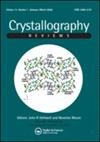《晶体学评论》的人工智能和机器学习,2021年第27卷第2期
IF 2
2区 化学
Q2 CRYSTALLOGRAPHY
引用次数: 1
摘要
“我们热爱文明的每一件事都是智能的产物,因此,只要我们设法保持技术的有益性,用人工智能放大我们的人类智能就有可能帮助文明前所未有地蓬勃发展。”生命未来研究院院长Max Tegmark说[1]。人工智能(AI)和机器学习(ML)背后有半个世纪的进化。这项指数级发展的技术可以很好地完成狭窄的任务,例如数学、气候变化建模、互联网搜索、面部识别、语音识别、驾驶自动驾驶汽车、客服、下棋,或者Facebook使用算法屏蔽违反规则的内容。它可以应用于自动化股票交易,为商业部门提供,解决公共和私营部门的商业问题。科幻小说经常描绘具有类人特征的人工智能,其中出现了关于对社会的影响以及围绕人工智能伦理的对话。人工智能或超级智能是人工智能的一种理论形式,它会有一种自我意识,有能力解决超越人脑智能和能力的问题。HAL就是一个例子,他是2001年《太空漫游》中的流氓电脑助理。回到现实,算法无法理解人类的本质:情感、道德、文化,因为这些能力无法用数学方程表达。人工智能通过结合计算机科学和强大的数据集来解决问题。机器学习是人工智能的子领域。深度学习是指一种神经网络,它由输入层和输出层之间的多个隐藏层组成。机器学习和深度学习在算法学习方式上有所不同。机器学习更多地依赖于人类的干预,而人类的干预决定了特征的层次结构。一个基于深度学习的系统将能够在更短的时间内完成同样的任务。分别来自英国迪科特Harwell科学与创新园区的Diamond光源有限公司和Rosalind Franklin研究所的Melanie Vollmar和Gwyndaf Evans在《晶体学评论》第27卷第2期中评论了“大分子X射线晶体学中的机器学习应用”。我们可以很快理解为什么钻石光源对引入人工智能进行了大量调查和需要阅读事实:在2020年全年,用户对MX光束线的访问几乎完全是远程的,从2020年6月开始的11个月里,测量了超过33000个数据集,通常每个晶体样本使用不到3分钟,每年的测量数据量达到许多PB。我们可以从文章中了解到,人工智能可以帮助解决结晶性问题,检测结晶试验中晶体的存在,预测实验数据和数据分析结果,实现实时性本文章由计算机程序翻译,如有差异,请以英文原文为准。
Artificial Intelligence and Machine Learning in Crystallography Editorial for Crystallography Reviews, Issue 2 of Volume27, 2021
“Everythingwe love about civilization is a product of intelligence, so amplifying our human intelligence with artificial intelligence has the potential of helping civilization flourish like never before – as long as wemanage to keep the technology beneficial.” saidMax Tegmark, President of the Future of Life Institute [1]. There is half a century of evolution behind artificial intelligence (AI) and machine learning (ML). The exponentially developing technology can do a good job at narrow tasks for example in mathematics, modelling climate change, internet searches, facial recognition, speech recognition, driving autonomous cars, customer service, playing chess, or Facebook uses algorithms to block content that breaks its rules. It can be applied in automated stock trading, it is offered for the commercial sectors, solving business problems for public and private sectors. Science fiction often portrays artificial intelligence with human-like characteristics, which emerges conversations about the impact on society and around the ethics of AI. Artificial General or Super Intelligence is a theoretical form of AI, where it would have a self-aware consciousness that had the ability to solve problems surpassing the intelligence and capacity of the human brain. An example isHAL, the rogue computer assistant in 2001: A Space Odyssey. Back to reality, algorithms cannot understand the essence of humans: emotion, morality, culture, since these abilities cannot be expressed in mathematical equations. Artificial Intelligence enables problem-solving by the combination of computer science and robust datasets. Machine learning is the subfields of artificial intelligence. Deep learning refers to a neural network, which comprise of multiple hidden layers between the input and output layers. Machine learning and deep learning differs in the way how their algorithms learn.Machine learning ismore dependent on human intervention, what determines the hierarchy of features. A deep learning-based systemwould be able to achieve the same task in a much shorter time. MelanieVollmar andGwyndaf Evans from theDiamondLight Source Ltd., and from the Rosalind Franklin Institute, respectively, both in Harwell Science and Innovation Campus, Didcot, UK, review the “Machine learning applications in macromolecular X-ray crystallography” in Issue 2 of Volume 27 of Crystallography Reviews. We can quickly understand why introducing Artificial Intelligence is somuch investigated and needed at the Diamond Light Source reading the facts: throughout 2020 user access to MX beamlines was almost exclusively remote, in the 11 months from June 2020 over 33,000 data sets were measured, typically less than 3minutes being used for each crystal sample, the yearly quantities of measured data reach many Petabyte. We may learn from the article that AI can contribute to the question of crystallisability, to the detection of the presence of crystals in crystallisation trials, to forecast of experimental data and data analysis outcome, to have real-time
求助全文
通过发布文献求助,成功后即可免费获取论文全文。
去求助
来源期刊

Crystallography Reviews
CRYSTALLOGRAPHY-
CiteScore
3.70
自引率
0.00%
发文量
16
审稿时长
>12 weeks
期刊介绍:
Crystallography Reviews publishes English language reviews on topics in crystallography and crystal growth, covering all theoretical and applied aspects of biological, chemical, industrial, mineralogical and physical crystallography. The intended readership is the crystallographic community at large, as well as scientists working in related fields of interest. It is hoped that the articles will be accessible to all these, and not just specialists in each topic. Full reviews are typically 20 to 80 journal pages long with hundreds of references and the journal also welcomes shorter topical, book, historical, evaluation, biographical, data and key issues reviews.
 求助内容:
求助内容: 应助结果提醒方式:
应助结果提醒方式:


